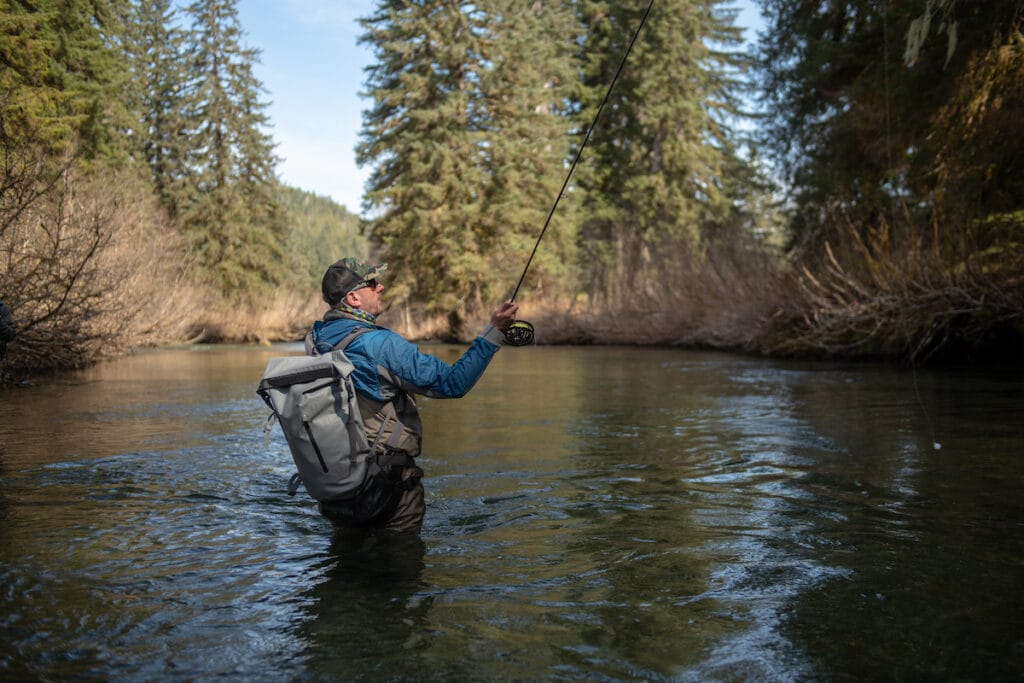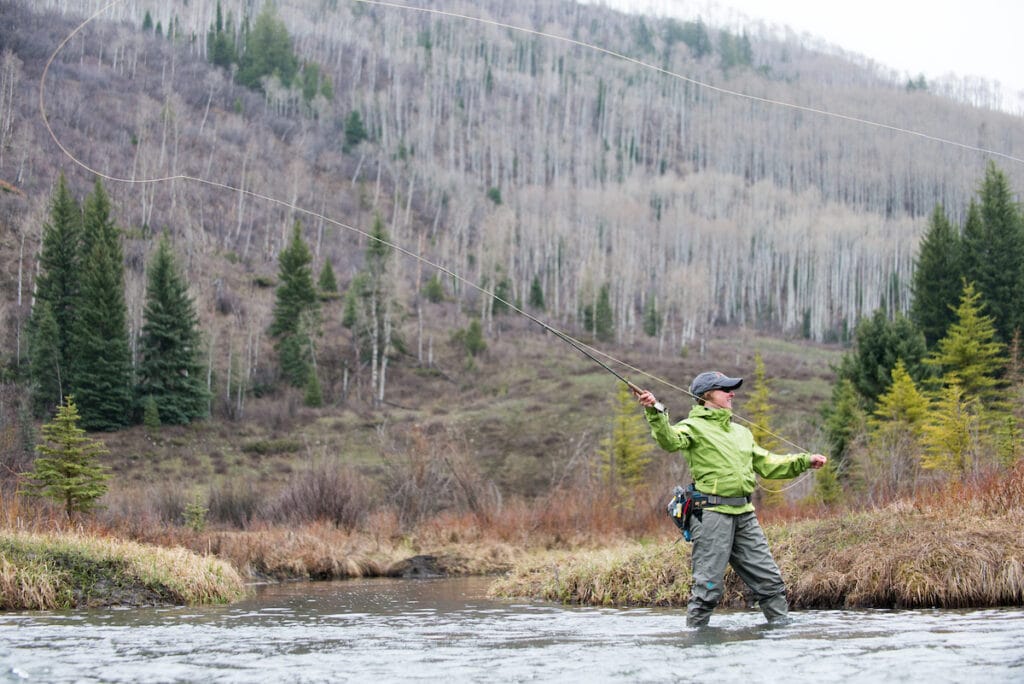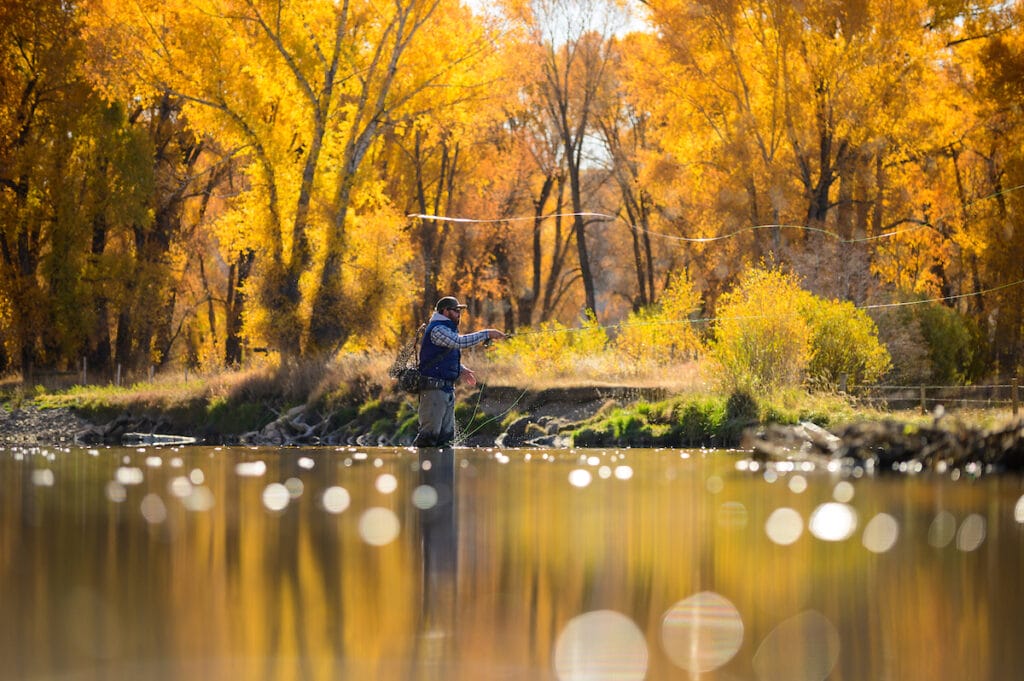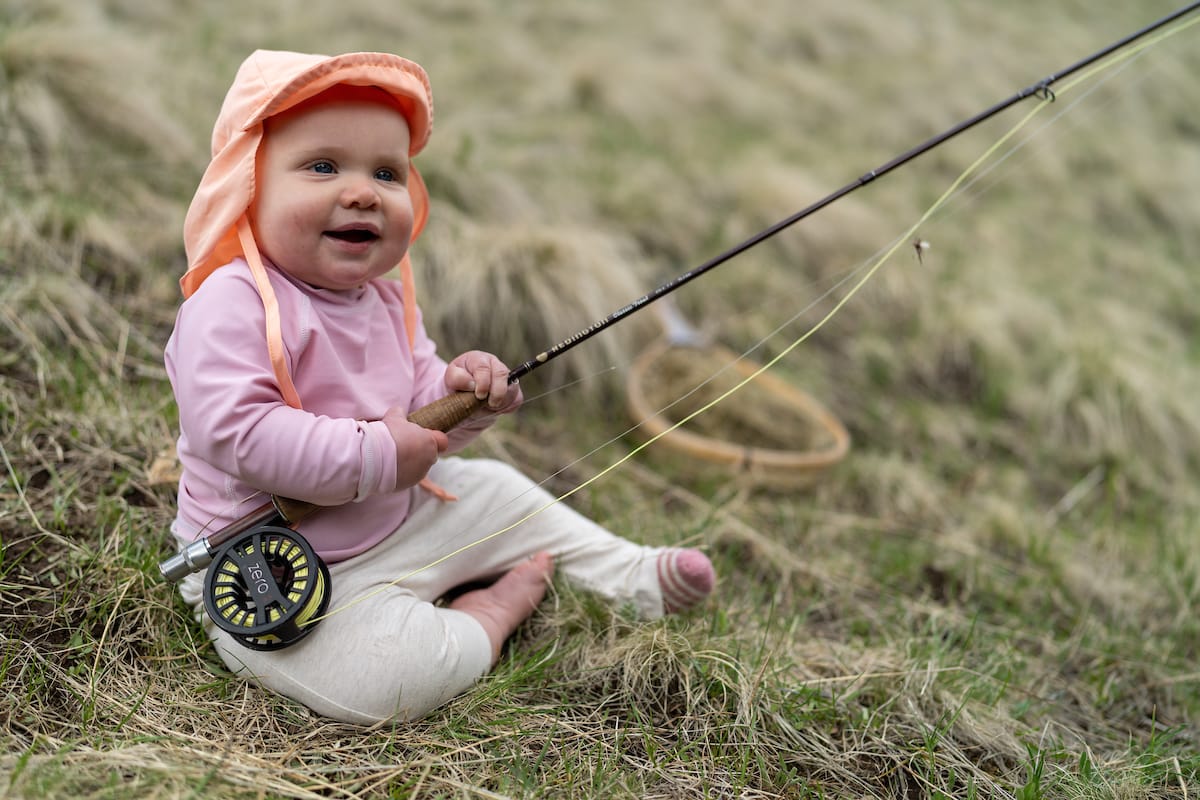Hint: it isn’t just about the fish.
It’s a question I get asked all the time, so I’ll try to tackle it now for those of you who might be thinking about a new rod for spring.
First and foremost, people often make the mistake of assuming that certain rods are meant for certain fish… this is a “trout rod” and this is a “pike rod” and so on. While that’s true to a degree (you don’t want a teeny, little rod if you’re going to fight great big fish and vice versa), there’s another more important thing to consider. Fly rods are really designed more around the types of flies you’ll want to cast, rather than the type of fish you’re going to be pulling on. After all, a rod is a casting tool, foremost.

The factors…
Weight
A 5-weight (the weight correlates to how heavy the fly line is; the lower the number, the lighter) is widely considered a gold standard in the trout world because it’s a versatile weight, useful for throwing many of the wide variety of flies trout might eat—from a size #10 Woolly Bugger to a size #18 Parachute Adams, and much, much more. Over 75 percent of all fly rods sold in America (total!) are 9-foot 5-weights, believe it or not. However, if you find you are mostly throwing dry flies and fishing smaller streams that don’t require long casts, you might prefer a 3- or 4-weight, and conversely, your “streamer” rod might be a 6- or a 7-weight.
Length
Length is a pretty simple consideration. Most fly rods are 9-feet long with good reason—easier to form casts, roll cast, mend the line, and so on. If you’re fishing in tight confines, though, shorter is better, and out on open water, or in situations where you want to extend reach (like nymph fishing or fishing from a boat), longer might be the choice.
Action
You’ll hear rods described as “fast,” “medium” or “slow” and in very basic terms, that describes how stiff they are. It has to do with “recovery” which is how quickly the rod tip returns to its original position after the rod is wiggled, cast, flexed or otherwise twitched. A fast rod snaps back into form quickly, slow, not so much. Both are good for different reasons, fast adds power and might lead to more distance, while slow lets you feel the rod flex and get in sync with the cast. Medium is, well, a happy medium.

Flex
Flex refers to where, throughout its length, the rod bends with most effect. A tip-flex rod is pretty stiff throughout and more flexible near its tip. A mid-flex rod has more pronounced bend in the middle section. Tip flex is typically fast, and mid flex is typically medium in action.
Tracking
In very basic terms, tracking refers to how much side-to-side wobble a rod tip experiences as the rod is flexed and cast, up and down. This can matter when it comes to accuracy, but not always. Generally speaking, however, I prefer a rod that tracks well, which helps to make casts more “true.”
Add all these factors together, and you’ll land on what suits you best. Want an all-arounder for fishing wide-open rivers in the West? Hard to argue against a fast-action, 9-foot 5-weight. A little more feel, more dry-fly specific, for smaller streams? An 8-foot 4-weight with medium action might be the ticket. The options are numerous.
The three most important factors of all:
- Choose what feels best for you. You need to test cast a rod and not get sold by what people tell you nor what you read. You’ll feel what’s right.
- No rod is as important as a practiced cast. Work on your casting, and you can get the best out of any rod.
- A fly line is the other important factor in the casting equation. Bad lines on great rods don’t work as well as great lines on so-so rods, and nothing beats great lines on well-engineered rods. But before you buy a new rod, remember that a new line costs a fraction of what rods cost.
Take these considerations into account the next time you’re in the market for a new fly rod and you’re sure to get one that suits you and your fishing scenario perfectly.




